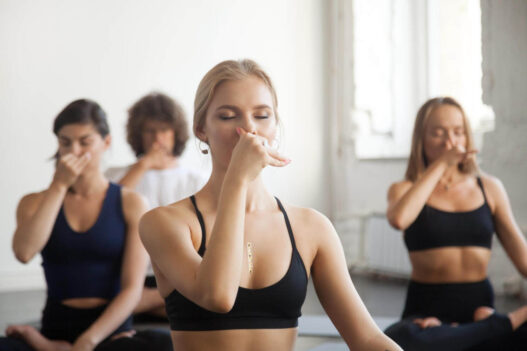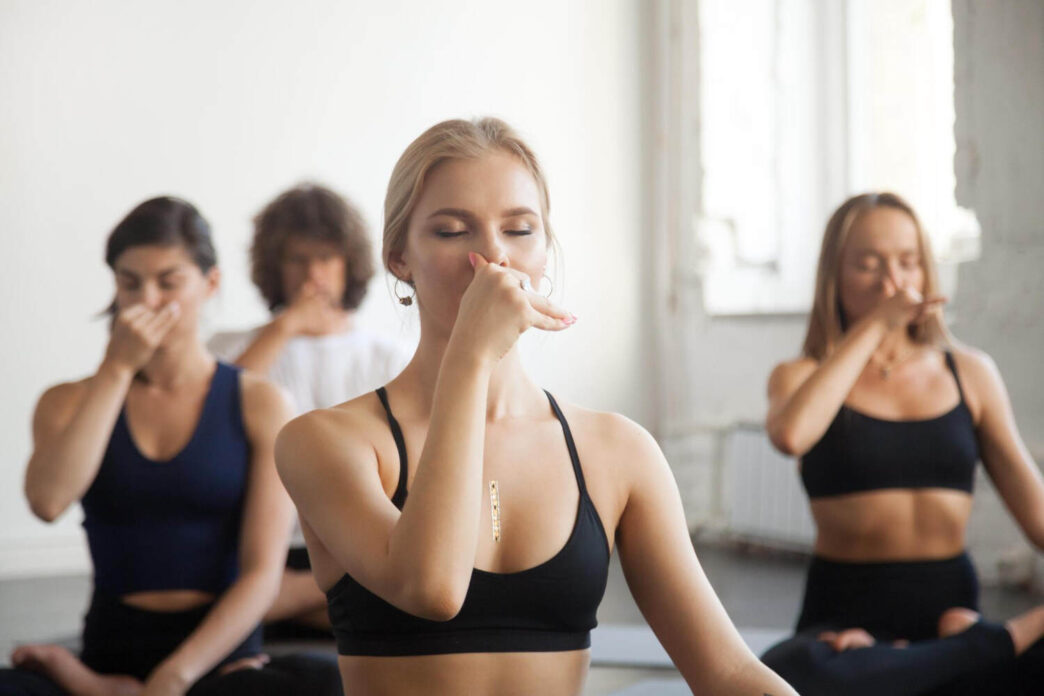Yoga for Hypertension? Here is the evidence on Yoga particularly Anuloma Viloma Pranayama yoga to lower blood pressure. Below are the tips on managing hypertension through reducing salt intake and breathing practices through Anuloma Viloma Pranayama by Naturopathy & Yoga Physician.
Hypertension – The Silent Killer
Hypertension, commonly called Blood pressure, is medically called the silent killer, as it leads to stroke & multi-organ failure, if untreated.
Blood pressure is globally found in around 1 in every 3 individuals & WHO estimates that around 40-50% of adults over the age of 25 have hypertension, and this number is projected to increase in the coming years due to aging populations and rising rates of obesity.
Risk factors for Hypertension
You will be needing to check off these boxes to make sure you do not fall under the risk group for Hypertension:
Age
As you age, the chances of hypertension increase, well you can’t stop ageing but being cautious is always more helpful, than being shocked by the diagnosis.
Family History
A positive family history increases the risk of Blood pressure.
Lifestyle factors
An unhealthy Diet, Regular alcohol consumption, lack of physical activity, frequent anger outburst & obesity increases the chances of Hypertension.
Pre-existing conditions
Diabetes, kidney disease & sleep apnea are factors that add to the risk of the disease.
Stress
The primary cause of any ailment is stress, and this definitely contributes to the development of Hypertension.
So, as a preventive measure, I do recommend you to take up regular monitoring of your blood pressure levels once every 6-9 months.
If you are above the age of 40 & do not have any frequent visits to hospitals, talk to your healthcare providers about the ways to reduce the risk factors if any (1).
Yoga and Hypertension – Yoga to reduce blood pressure
Globally, hypertension is becoming more common, which emphasizes the need for efficient prevention strategies, like lifestyle adjustments, early detection, and treatment to manage and lower the related health risks, and here is where you can take responsibility & create a positive impact on your health.
When the health community talks about lifestyle modifications, what we mean is making strong, tangible & measurable changes in your habits & here is where yoga perfectly blends in.
Yoga is not a practice of Asanasa or posture if you read carefully the texts, they talk about pranayama (means controlled breathing through yoga), meditation, and relaxation. Anuloma viloma is a specific type of Pranayama.
Apart from this, Yoga also reminds you about certain rules & regulations for the practice, which is very essential to keep yourself at the pink of health, but yes today we are not aware of them when we practice, and for many of us, that itself will be a burden to follow.
So, modern-day problems require modern-day solutions, and our solution though looks ancient, has been refurbished for the understanding of the common public at large, so let’s start with diet.
The most important change in diet which is very much necessary is the usage of salt. Salt needs to be cut first in order to reach your target. Yes, it’s difficult to part ways with salt as food without salt is like fish without water, so try to keep it within the range of 3 to 12 g of salt per day.
How you can measure that?
Just take a teaspoon full of salt early in the morning before you start your breakfast, & use this teaspoon of salt for enhancing the taste of your food for the entire day.
Studies have correlated the consistent dose-response relationship between salt intake and blood pressure. Just a 3 g/d of reduction could reduce the systolic blood pressure by 5mmhg (1).
When it comes to yoga, it has been well documented that yoga can help people with hypertension lower their blood pressure. There are several studies on Anuloma viloma pranayama yoga to reduce blood pressure. As per studies, adopting yoga & yogic principles regularly can reduce anxiety & stress while also improving heart health, which can reduce the symptoms of hypertension.
The yoga-based practice of deep breathing, with minimal physical postures, meditation, and relaxation has all been demonstrated to be useful in lowering high blood pressure (hypertension) (2).
Also, it is very necessary to understand that Yoga is not equal to Asana or physical practices.
Yogic practices of asanas work well if the focus is drawn on breath work, meditation & relaxation, over just being able to reach the target posture or flexibility.
Let me reiterate that asanas will not yield much help when it comes to reducing the cardiovascular burden, but yes, through breathing or breath awareness pranayama such as Anuloma viloma, meditation & relaxation, there have been a lot of significant changes in how our physiology functions with respect to hypertension.
There is a clear change in our parasympathetic activity (3). Parasympathetic activity is that which keeps you calm & relaxed (4). This parasympathetic activity is what you require to keep your stress at bay & to keep your body functions relaxed.
Anuloma Viloma Pranayama Yoga to Reduce Blood Pressure
The best breathing practice that can be adopted for reducing blood pressure is all those pranayamas that help in creating parasympathetic dominance, such as Bhramari or Bee-Humming breathing, Chandra Anuloma viloma, or the Left nostril breathing.
These practices can be done anytime, but make sure you practice daily & regularly for a minimum of 8 weeks & every day for at least 15 minutes per day with each minute having 10 rounds of breathing practices (5-6).
A continuous 15 minutes of Anuloma viloma pranayama initially & for beginners, might look tiring & can be demotivating. So, you can break it into 4 or 5 sections, and be aware of your breath and this will also help you keep your stress at bay (7).
In much of the research, pranayama is considered the 1st line of treatment for stage-1 hypertension & pre-hypertensive patients and for people who are yet to consider switching to medications (6).
So, in this context, let us learn a simple Left nostril breathing or what we call Chandra Anuloma Viloma:
- Sit comfortably on a chair or on the floor.
- If you are a beginner take back support, if not, try to keep your back straight
- With your right hand, use your thumb to close your right nostril, keep the rest of the fingers relaxed, not touching any part of the face, either close your palm or keep it open.
- Take a deep breath from your left nostril, and maintain a slow, steady & consistent flow of breath into your lungs
- Try to fill up your lungs with air, as much as possible
- Slowly, without any force, make sure that the steady & consistent flow of breath is let out, let the outbound breath be as slow as possible
- During the entire process keep your eyes closed, and focus on the movement of your lungs, on your breath, or on the tip of your nose
- A Single inhalation & exhalation is considered as one round, likewise, complete 5-10 rounds at a stretch
- Take a break
- Continue the next 10 rounds after a few minutes
So, making these two changes can add a lot more miles to your health journey. Being aware of your breath now & then through Anuloma viloma pranayama or any other yoga technique and salt reduction are the two vital practices that can keep your blood pressure at bay.
Sources
- Salt & hypertension
- Yoga Research- A systematic review of a randomized clinical trial
- Breathing & Yoga
- Pranayama & Cardiovascular activity
- Necessity for a regular Pranayama practice
- Pranayama as a first line of treatment
- Pranayama effects

Dr. Adithya Hande, Naturopathy & Yoga Physician, is a patient-centric doctor, with 20+ years of experience in Yoga & 7 years of experience in the Wellness industry, seeking to reduce the burden of patients with their chronic conditions through scientific & realistic health goals. He has previously worked as a Health coach at Dvara Health Finance to help people reduce their Diabetes, Obesity & hypertension Risk, worked as a Senior Naturopathy Consultant at Ishka Health care, and as Chief Physician at Shathayu Ayurveda & Yoga Retreat. Dr. Adithya helps guide their patients to achieve their goals particularly a strong and fit body and mind.











